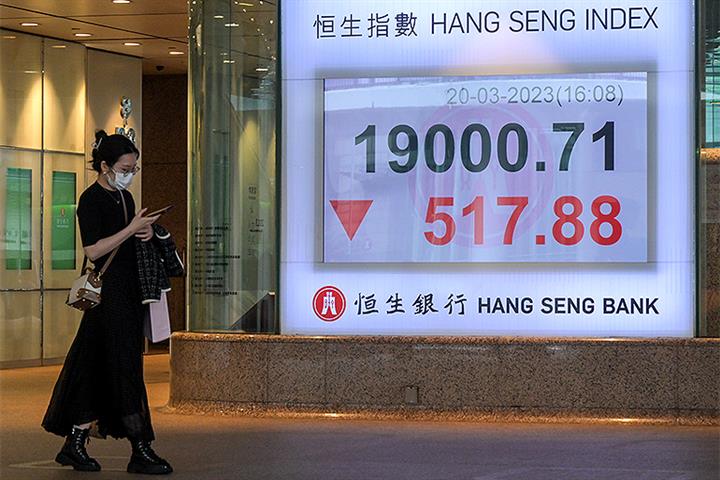FXOpen

Having a solid understanding of risks and how to manage them effectively is crucial for traders to achieve high long-term performance. Experts and trainers speak tirelessly about asset protection and risk management, which are essential when trading in financial markets such as stocks and forex. When implementing sound risk control strategies, traders may enhance their capital protection and may increase their chances of getting returns.
This FXOpen article discusses why risk management is an option in trading to minimise financial losses. You will gain some insights into asset management for traders.
Possible Risks That Traders May Face
Traders face various types of risks that may affect their trading performance. Let’s explore the most common ones:
- Market risks — risks that are generally beyond the trader’s control and include factors such as inflation, geopolitics, and economic crises.
- Trading risks — slippage, overleveraging, and overnight price movements.
- Lack of management — traders may face the danger of not having proper asset management protocols in place, which can lead to potential losses.
- Unauthorised trading — this occurs when a trader executes trades without authorisation, exceeds loss limits, or engages in the unauthorised execution of trades on a customer’s accounts. To avoid such risks, choose a reliable broker such as FXOpen. We are authorised and regulated by the FCA, CySEC and ASIC, and also have an offshore entity, which is a member of The Financial Commission.
Understanding and managing these risks can help traders protect their capital more effectively and improve their performance in the financial markets in the long run. Advanced analytics and machine learning can help identify potential issues.
Below, you’ll learn about implementing effective risk management strategies to safeguard trading activities.
Risk Management Insights
Trading and risk management are closely connected. Developing a comprehensive asset management plan is crucial to protect traders’ accounts from significant losses. As you may know, risk management in day trading is different from risk management in swing or long-term trading. However, there are commonalities and generally accepted techniques that are suitable for all trading strategies.
1. Defining Your Risk Tolerance
Before opening any trades, a trader needs to determine their risk tolerance. This involves assessing how much capital one is willing to risk in any given trade. An accepted rule of thumb is considered to put on the line no more than 1-2% of the trading account per trade. For example, if your trading account is $10,000, the theory states that you shouldn’t risk more than $100-200 per trade.
However, you can put together your own standards and be guided by your feelings and skills. The main point is to do it systematically, gradually, and thoughtfully. The theory states that making trades based on emotions often leads to losses.
2. Using Stop-Loss Orders
The use of stop-loss orders may allow traders to protect their investments. Such an order is an instruction to automatically exit a position at a predetermined price, allowing traders to limit the risk of price declines. For example, if a trader buys a stock at $50 and sets a stop loss at $45, they will automatically exit the trade if the price falls to $45, limiting their loss to $5.
By setting a stop-loss order, a trader has a predetermined strategy for exiting a position, which helps them avoid emotional decision-making and missed exits during market fluctuations. This approach to risk management allows traders to limit losses, promoting a disciplined and strategic approach to trading.
3. Diversifying Your Trades
By spreading your trades across different assets or markets, you can reduce the impact of any single trade on your entire portfolio. For example, instead of putting all of your capital in one currency pair, you can allocate some of your capital among stocks, other currencies, and commodities.
Diversification can also be achieved by splitting your capital between long-term investing and shorter-term trades. For example, a trader may allocate a portion of their capital to long-term investments in bonds or mutual funds while also engaging in shorter-term trades via contracts for difference (CFDs) or in the forex market.
On the TickTrader trading platform, you can find different assets that you may use for diversification.
4. Avoiding Overleveraging
Using leverage can amplify both profits and losses in trading. While leverage can potentially increase returns, it also significantly increases the risk of large losses. Overleveraging can lead to margin calls, where a trader’s broker requires them to deposit additional funds to cover the losses in their account. If the trader is unable to meet the margin requirements, their position may be closed out by the broker, leaving them without their initial funds. Therefore, traders need to implement leverage cautiously.
5. Regularly Reviewing and Adjusting Your Plan
Markets are dynamic and constantly changing, so traders have to regularly review and adjust their risk management plan to adapt to new market conditions. This helps to account for unexpected events, such as black swans — rare, unpredictable events that have a considerable impact on the market and are difficult to predict.
For example, the COVID-19 pandemic was a black swan event that had a significant impact on the global economy and financial market. Traders may include reassessing risk tolerance, adjusting stop-loss levels, or re-evaluating diversification strategies on their to-do list.
Final Thoughts
Overall, by determining risk tolerance, using stop-losses, diversifying assets, avoiding excessive leverage, and regularly reviewing and adjusting the asset management plan, traders can better protect their capital.
You can open an FXOpen account and read our blog to learn more about trading strategies, assets, and current news. Even though there are no guarantees in trading, implementing sound risk management practices can significantly improve your chances of success.
This article represents the opinion of the Companies operating under the FXOpen brand only. It is not to be construed as an offer, solicitation, or recommendation with respect to products and services provided by the Companies operating under the FXOpen brand, nor is it to be considered financial advice.






